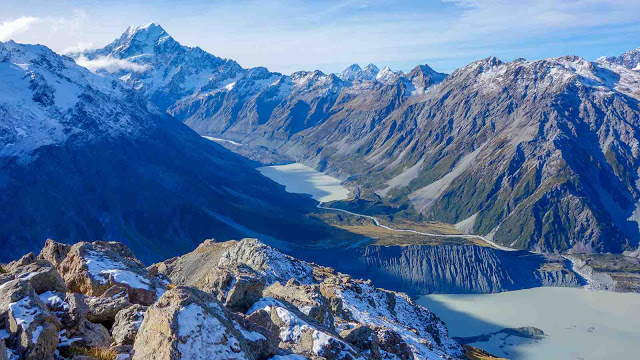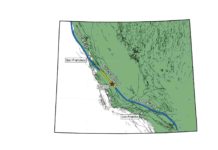
The major fault line, which runs almost the entire length of the South Island, has been assumed to be a near vertical crack. However, studies of seismic data have revealed the fault line becomes flatter at depth.
“What we’ve found is that for approximately 350 kilometres of the length of the South Island, the land mass of the Pacific Plate is actually sitting and sliding right on top of the Australian Plate,” says Associate Professor Simon Lamb from the School of Geography, Environment and Earth Sciences.
“So, rather than thinking of the fault line as a vertical crack, we should be thinking of it as a nearly horizontal one that curves up to the surface where the fault line is exposed.”
The region where the Pacific Plate is stacked on top of the Australian Plate is believed to be up to 100 kilometres wide in some places.
“As well as vastly increasing the area where the two plates are in contact with each other, the research tells us that the effects of earthquakes may be quite different, and in some big earthquakes, the rupture zone may never break the surface.”
According to Dr Lamb, although more research needs to be done to better define the possible rupture zone, this poses a very different geological problem when assessing earthquake risk.
“Someone in the centre of the South Island, for instance, might think they are miles away from the fault line, when, in actual fact, the fault could be right underneath them, making these regions more vulnerable than first thought.”
The conclusions were drawn from research into both the thickness of the South Island’s crust and the speed of seismic waves.
“The crust is very thick beneath the South Island, which is not what you would expect if the two tectonic plates were just sliding past each other on a near vertical fault. Also, seismic waves generally travel faster the deeper down you go, and yet the wave speeds get slower beneath the Southern Alps,” says Dr Lamb.
“The seismic data made complete sense from a recalculation of the physical relationship between the two plates.”
The research findings have been published in the American Geophysical Union journal G3.
Note: The above post is reprinted from materials provided by Victoria University.










